Bike trips: Cycling Long Distances
In this Article
Published on 16th October 2023
Long distance cycling or bikepacking is experiencing growing interest in recent years. Whether it's for exploring a specific region, crossing an entire country, or even cycling around the world! Why? For the simple reason that this form of travel offers a unique and very rewarding experience. In this article, we will explore the benefits of cycling, the key elements to consider when planning a cycling trip, and some practical tips to fully enjoy this adventure (yes, a cycling trip is first and foremost an adventure!).
Why go on a cycling adventure?
Freedom
Setting off, leaving behind your daily routine to hop on your bike. Right from the beginning of a bikepacking adventure, you'll experience that unique and characteristic feeling of freedom. Cycling is a means to acquire fleeting freedom. Embarking on a bike packing adventure means giving yourself the opportunity to adjust the route, take detours, be curious, and explore a little further, etc. Cycling gives you the freedom to choose to turn right when the GPS indicates left.
Mapping your route
Freedom, yes! But keep in mind that to cover long distances with your bike, you also need to be practical and prepared. The route forms the backbone of the journey; it's what will guide you and help you reach your destination.
When choosing your route, listen to yourself; it's important to find meaning in the journey. It could be a personal, geographical, historical, or simply connecting places of interest you wish to (re)discover. The important thing is to set off convinced that you've constructed a "logical" route that makes sense.
If you want to start bikepacking near Strasbourg, take inspiration from this article to plan your route and ride by the must-see passes in Alsace.
Setting personal goals
When preparing for an ultra bikepacking adventure covering long distances, it's essential to define personal goals. Set a framework but allow some flexibility. How far to travel each day? How many days to go for? What's the total distance? All of these questions need to be considered during the preparation phase. These goals should align with your personality and physical condition. As an indicative measure, for a multi-day journey with minimal physical training, it's entirely reasonable to set a goal of 100 km per day. With training and determination, the daily distance goal can quickly surpass 150/200 km or more!
Planning your adventure
Why plan? Planning your adventure is crucial. It's impossible to anticipate all the contingencies on a multi-day journey; the objective is to have as many answers as possible to the questions you have. Prioritise planning distances, accommodation, routes, weather, necessary equipment, etc. Arriving prepared is the guarantee of avoiding some unpleasant surprises that can undermine morale in the long run (morale is another key element on a long-distance adventure; preserving it as much as possible is paramount).
To ensure you don't forget anything while bikepacking, we have a list of things not to forget, written just for you ;)
How to organize a long-distance cycling adventure?
When planning a cycling adventure, whether it's a week-long bikepacking, an ultra gravel ride, or a 2000 km ultra endurance race, the list of considerations is long. The non-exhaustive list below is a good start:
- Distance & elevation, total & daily: How many kilometers per day? In total?
- Duration: How many days available? What are the duration goals? How many extra days should be planned for adapting the adventure in case of hiccups?
- Road (Garmin, Komoot, Hexplo,... quality platforms are numerous): Where to go? Which cities or points of interest to include? What types of terrain (road, gravel, etc.) to favour? Which Road planning app to prioritise?
- Logistics (Refuelling, equipment, accommodation): Where to stock up on energy along the route? Where to find spare equipment? Where to sleep? Book last minute or in advance?
- Safety (prepare fluorescent vest, warm and waterproof clothing, basic medical kit,...): Is my first aid kit complete (bandages, survival blanket, sunscreen, ...)? Do I have the essential equipment for bad weather? (Waterproof jacket, fluorescent vest, puffer jacket, ...)
- Budget: How much am I willing to spend on such an adventure? What margin am I giving myself? Note: It's important to plan to carry cash, as card payments without a minimum purchase may not be possible everywhere!
- Weather (before and during, always stay attentive to developments): What weather will I have on the route? What clothing kit to take? Is all the equipment suitable/necessary?
- Alternative plans (see next section): What's the backup plan in case of extreme heat? Or in case of rain? Where to take the train in case of force majeure?
The nature of a long trip on a bicycle is the unpredictable, you can't predict everything, and surprises will happen no matter what! Whether it's dealing with the weather, a lack of physical condition, a health issue, or anything else, it's essential to plan fallback options. Keeping in mind one or two alternative routes, a shortcut or detour, adjustment possibilities, etc., may seem pessimistic before you even set off, but it's crucial to mitigate risks and not be helpless in an unforeseen situation (which will inevitably happen).
Our advice for organizing an ultra-cycling adventure
What equipment to take for a long-distance bike trip?
When it comes to choosing equipment, you need to once again consider your goals. Those who want to ride fast will have to choose equipment based on weight, while those embarking on longer, more relaxed trips will prioritise comfort, etc. In any case, you need suitable equipment capable of fulfilling its intended use. Equipment can be considered through the following five categories:
- Safety & Health: High visibility vest, helmet, first aid kit, front and rear lights, basic hygiene items
- Maintenance & Repair: Spare inner tubes, kit for changing inner tubes, multi-tool
- Clothing: Warm clothing, waterproof clothing, padded shorts, head cover for extreme heat
- Supplies: satchels for carrying items, a sufficient water supply, food (cereal bars, compotes, ...)
- Electronics: Electronic maps, GPS, portable battery, chargers, headlamp, bike computer
The choice of the bicycle is also an important factor to consider. If you plan to stick to well-maintained asphalt roads or paved greenways, then a road bike can be your ideal travel companion. Leading brands all offer "endurance" models with a less aggressive geometry than aero bikes, making them more comfortable for very long rides.
If you want to leave the roads and tackle unkept or unpaved paths, then a gravel bike will be your best ally.
If you need help deciding, our article on the subject will provide you with some food for thought.
What are the mistakes to avoid for riding long distances for several days in a row?
To ride long distances, you must first accept riding slowly and preserving your muscle fibres as much as possible to endure. Ultra-cycling is a discipline in its own right in cycling. Setting off to ride several hundred or thousand kilometers requires training and tolerance for hours in the saddle that can only be gained through practice. Training serves several purposes. The first lesson is related to your level: training gives a precise idea of your level; it's easier to plan an ultra or adventure from there. Practicing helps build resistance to minor discomforts or pains that can occur on this type of challenge. Finally, learning to ride long distances before an ultra or bikepacking adventure also helps to accustom the stomach to digestion during exertion: What products are tolerated/ effective? Which ones don't work and should be avoided?
Enjoying and finding pleasure in an ultra-cycling adventure
Ultimately, cycling should be summed up in one word: enjoyment. Setting off on your bike, whether accompanied or alone, should be a source of happiness and pleasure above all else. A bike journey, whether it's sporty, extreme, or relaxed, is an adventure, and an adventure inevitably provides memories that last a lifetime. There will probably be difficult moments at the time, but they should always be put into perspective, and you should aim to get the most out of each moment spent on the bike, tracing your route through the countryside and mountains.
Conclusion
Cycling long distances is an incredibly rewarding experience. Not only does it allow you to discover new landscapes and immerse yourself in new cultures, but it's also an environmentally friendly way to travel that promotes health and well-being. By carefully planning your journey and following some practical tips, you can fully enjoy a unique adventure! So, prepare your bike, put on your cycling shorts, and set off to explore new horizons on your bike!
Maxime, who set out to do the "real" Tour de France by bike, shares his perspective on planning
"Setting out to do a 4000 km ride in 20 days, I was determined to have a detailed plan for my days, to avoid leaving any detail in the dark, to set off with certainties. After 3 months of in-depth preparation, I thought that everything had been considered and that I couldn't be caught off guard. Two days after I started, almost all of those certainties evaporated. The heatwave was waiting for me in the South and made me endure every hour spent on the saddle. After 3 days of relentless cycling in 42-degree heat, I decided to opt for a plan B. I deviated from my original goal which was supposed to take me from Nice to the Basque Country via the Pyrenees and then head northwest from Foix. The route was no longer perfect as I wanted it; it no longer followed the country's natural border, but in one fell swoop, it gave me 10 degrees less. This decision was tough to make, but it surely saved my challenge and the following 15 days."
This disillusionment, from my perspective, does not diminish the beauty of the challenge I accomplished. I learned one of the most beautiful lessons possible on that day of cycling. No matter how beautiful your plans are, you can never predict everything. Setting off prepared is essential, even mandatory. But you must keep in mind that you will likely need to adapt, revise your ambitions and goals based on the weather, the day's form, and so on.

Above: the originally planned route in blue, the route undertaken in red, which allowed Maxime to lose 10 degrees in a day.
If this story also inspires you to embark on an adventure, feel free to read the article on how to travel alone by bike.















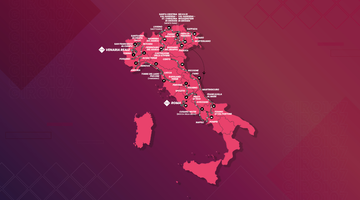




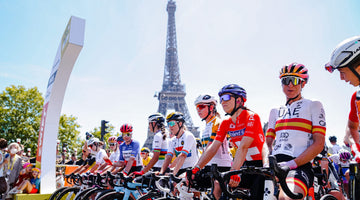










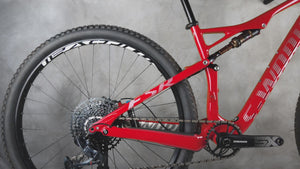










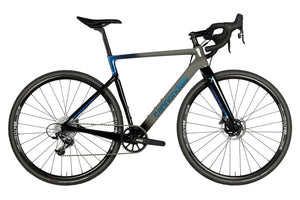




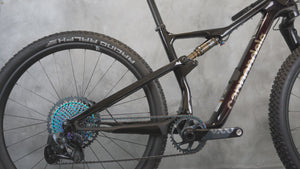





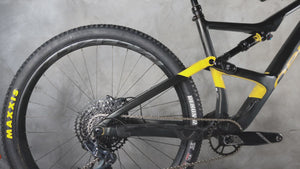



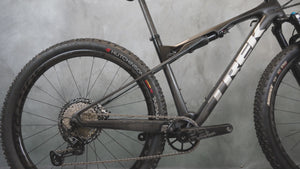



1 comment
Bravo Maxime…
Quel beau parcours… Je suis vraiment impressionné.
Quand vous avez fait votre tour de France, quel était votre vélo, et aviez une remorque monoroue ?
J’aimerais me lancer le défi de partir de Paris, jusqu’à Saint Gilles croix de vie en Vendée, en 1 semaine.
Quand on lit le texte plus haut, faire 100 à 150 km par jour semble accessible, mais, on sait bien, que passer le cap des 100 km reste un exploit pour beaucoup de cyclistes amateurs, comme je suis… Et Le refaire le jour suivant…
Je suis en admiration… Bravo